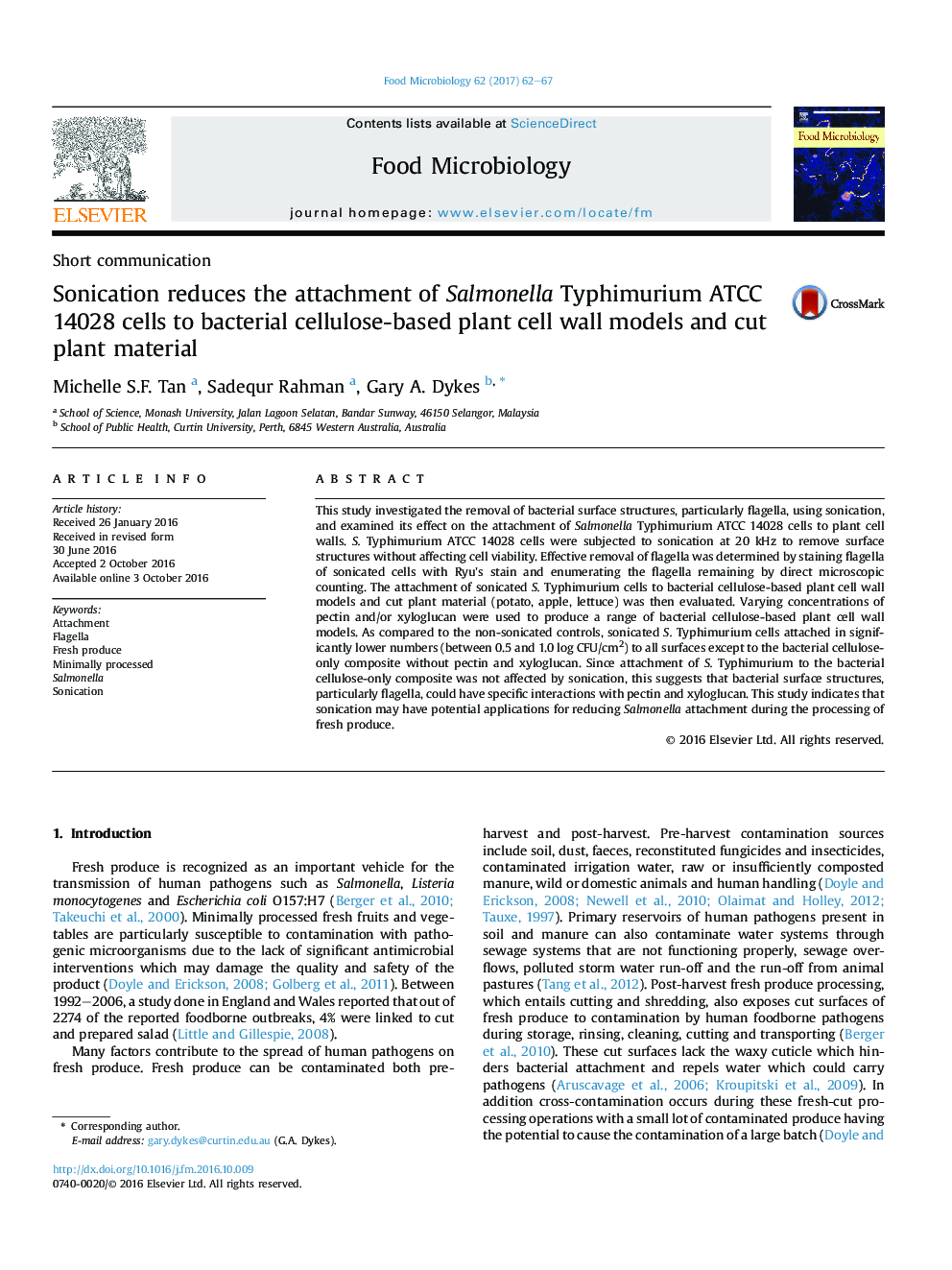| Article ID | Journal | Published Year | Pages | File Type |
|---|---|---|---|---|
| 4362534 | Food Microbiology | 2017 | 6 Pages |
•Flagella of Salmonella Typhimurium cells were sheared using sonication.•Sonication was effective in reducing Salmonella attachment to cut plant materials.•Sonication reduced Salmonella attachment to most plant cell wall models.•Sonication may be effective in controlling Salmonella on fresh produce.•Further scale-up work is required to establish sonication's effectiveness.
This study investigated the removal of bacterial surface structures, particularly flagella, using sonication, and examined its effect on the attachment of Salmonella Typhimurium ATCC 14028 cells to plant cell walls. S. Typhimurium ATCC 14028 cells were subjected to sonication at 20 kHz to remove surface structures without affecting cell viability. Effective removal of flagella was determined by staining flagella of sonicated cells with Ryu's stain and enumerating the flagella remaining by direct microscopic counting. The attachment of sonicated S. Typhimurium cells to bacterial cellulose-based plant cell wall models and cut plant material (potato, apple, lettuce) was then evaluated. Varying concentrations of pectin and/or xyloglucan were used to produce a range of bacterial cellulose-based plant cell wall models. As compared to the non-sonicated controls, sonicated S. Typhimurium cells attached in significantly lower numbers (between 0.5 and 1.0 log CFU/cm2) to all surfaces except to the bacterial cellulose-only composite without pectin and xyloglucan. Since attachment of S. Typhimurium to the bacterial cellulose-only composite was not affected by sonication, this suggests that bacterial surface structures, particularly flagella, could have specific interactions with pectin and xyloglucan. This study indicates that sonication may have potential applications for reducing Salmonella attachment during the processing of fresh produce.
